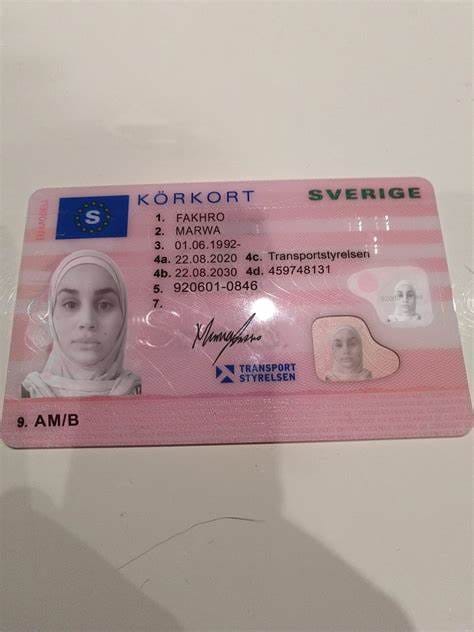댓글 0
등록된 댓글이 없습니다.

Driving is an essential skill for many, offering the flexibility to travel where and when you desire, frequently making life easier and satisfying. However, acquiring a driving license is a procedure that needs understanding, persistence, and adherence to legal treatments. This guide aims to offer a comprehensive summary of the actions one need to follow to legally obtain a driving license, highlighting crucial factors to consider and frequently asked questions to guarantee a smooth and problem-free experience.
Before diving into the application process, it's vital to comprehend the basic requirements and kinds of driving licenses readily available. Driving laws vary substantially from country to country, and even within various states or provinces within the exact same nation. Typically, there are several types of driving licenses, consisting of:
The first step in getting a driving license is to investigate the particular requirements in your area. Check out the main website of your local Department of Motor Vehicles (DMV) or comparable agency to discover comprehensive information about the licensing procedure, consisting of age limitations, required files, and fees.
Each jurisdiction has its own set of documents that need to be submitted to make an application for a driving license. Typically required files consist of:
Many states and nations need new motorists to complete a driver's education course. These courses are developed to teach the guidelines of the road, traffic laws, and safe driving practices. They can be completed online or in a class setting and typically consist of both theoretical and useful parts.
Once the required documents is ready and the driver's education course is completed, the next step is to get a learner's authorization. This typically includes visiting the DMV or submitting an application online. You will likewise require to pass a written test that covers traffic laws and driving knowledge.
With a learner's permit, you can start practicing driving under the guidance of a licensed grownup. This is a crucial action in developing your self-confidence and abilities behind the wheel. It's likewise crucial to acquire experience in numerous driving conditions, such as night driving, highway driving, and driving in harsh weather condition.
After getting adequate driving experience, you can set up a driving test with the DMV. The test will evaluate your ability to securely operate a car and follow traffic laws. You will require to bring a properly registered and insured vehicle to the test, and the inspector will examine your driving abilities on a predetermined route.
If you pass the driving test, you will generally receive a provisionary license. This license may include restrictions, such as a curfew or a limitation on the number of passengers you can have in the lorry. These restrictions are developed to minimize the threat of accidents and help new chauffeurs adjust to the road.
As soon as you have actually held a provisional license for the necessary period and satisfied any extra requirements, you can update to a complete driver's license. This process generally involves a simple application and may need a retest or extra paperwork.
A: The minimum age differs by jurisdiction. In the United States, it typically ranges from 15 to 16 years old. In the UK, the minimum age is 17. Inspect your regional DMV website for specific information.
A: Some jurisdictions enable you to finish parts of the application procedure Köpa A1 och A2 Körkort Online, such as submitting kinds and scheduling tests. Nevertheless, you will normally need to go to a DMV office in individual to submit required documents and take the driving test.
A: If you stop working the driving test, you can usually retake it after a specific period. This duration varies by place, however it is frequently a few weeks. It's an excellent idea to practice more before retaking the test to enhance your possibilities of success.
A: No, a learner's license generally needs you to be accompanied by a licensed grownup, typically over 21 years old, who is seated in the front traveler seat.
A: Yes, most jurisdictions require a vision test to guarantee that you can securely operate a car. You can generally take this test at the DMV or with an authorized optometrist.
A: The time needed to acquire a complete driver's license differs depending on your jurisdiction and the particular steps included. Normally, it can take several months, including the time needed to finish a driver's education course, hold a learner's permit, and pass the driving test.
A: It depends upon the constraints placed on your provisional license. Some provisionary licenses allow you to drive for work, while others might have specific limitations. Examine your license for information or get in touch with the DMV for explanation.
A: A student's authorization is the very first stage of the licensing process and allows you to drive only under supervision. A provisionary license, on the other hand, grants you more driving advantages but may still have some constraints, such as a curfew or passenger limitations.
A: No, you typically require a full driver's license before making an application for a CDL. A CDL is a specialized license that requires additional training and testing, and it is just provided to those who have demonstrated the capability to safely run a standard vehicle.

A: If you lose your driving license, you ought to report it to the DMV and apply for a replacement. You may require to offer proof of identity and pay a charge. It's also an excellent concept to alert your insurance provider and any other relevant parties.
Getting a driving license is a substantial milestone that opens up new chances and increases self-reliance. By following the steps outlined in this guide and remaining informed about local laws and requirements, you can ensure a smoother and more effective licensing process. Bear in mind that driving is a serious obligation, and taking the time to find out and practice is necessary for your safety and the safety of others on the roadway.

0등록된 댓글이 없습니다.